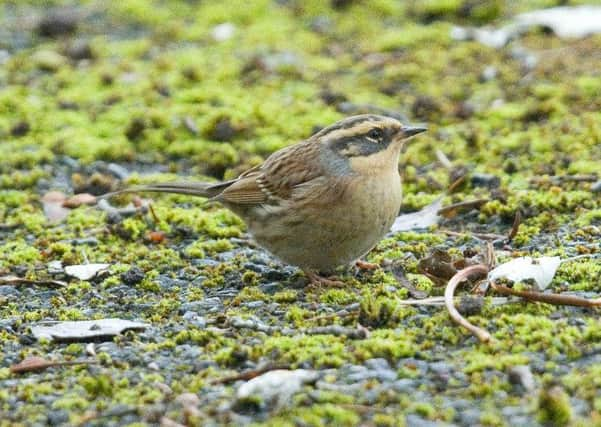Birdwatch: From Russia with wonder aboard constant easterlies


The highlight has been Yorkshire’s and mainland Britain’s first two Siberian accentors. The first was found last Thursday feeding on a moss covered car park off Vicars Lane, Easington. Since then thousands of birders have queued to see it in groups organised by volunteers from the Spurn Bird Observatory.
Then on Saturday a second was seen at Huntcliff, Saltburn, another the following day at Hendon, Sunderland and one on Tuesday on Holy Island, Northumberland. The Siberian accentor is a distant relative of the dunnock but has cream and black head markings. It breeds on both sides of the Urals and in Siberia above the Arctic Circle and normally winters in south east Asia.
Advertisement
Hide AdAdvertisement
Hide AdThis month there’s been an unprecedented influx into northern Europe with 59 found in countries outside Russia in 13 days between October 4-16 including 12 on October 14 alone. The first for Britain was found on Shetland on October 9, four days before the Easington bird.
So far the October influx has more than doubled all previous European records for the past 100 years up to 2015. Six more newly arrived birds were found in Finland on Monday and seven in Sweden - more are likely in the coming weeks including in the British Isles.
Among the long list of other rarities from the east were an Isabelline wheatear just to the south of Easington feeding in a ploughed field, male pied wheatear briefly at Flamborough Head and desert wheatear on the sea wall opposite the Expanse Hotel, Bridlington.
Dusky warblers were reported at along the coast with a remarkable nine present at Spurn on Saturday, a paddyfield warbler was at Flamborough Head and there were Raddes, barred, and more Pallas’s and yellow-browed warblers, Siberian stonechats and chiffchaffs, and tawny, Richard’s and olive-backed pipits.
Advertisement
Hide AdAdvertisement
Hide AdThere have been large arrivals of common migrants along the coast such as redwings, fieldfares, ring ouzels, bramblings, goldcrests, some firecrests with five at Spurn, lesser and mealy redpolls, crossbills siskins, robins and woodcocks.
Shorelarks were at Kilnsea with two showing in the car park of the Blue Bell café while another was in the car park at the Bempton Cliffs reserve.
There were more great grey shrikes on the coast and one inland at May Moss in Langdale Forest where at least two spent last winter.
Tundra bean and white-fronted bean geese moved along the coast and some called in at Hornsea Mere, Kilnsea wetlands, Thornwick Pools and North Marsh, Flamborough, Seamer Carrs and Long Nab.
Advertisement
Hide AdAdvertisement
Hide AdSeveral little buntings were seen at Spurn while another was reported on Clapham Moor in the Dales, and a Slavonian grebe was at Skelton Lake, Leeds while a hawfinch, a rare sight these days, was seen over the Old Moor reserve and another at Angler’s Country Park.